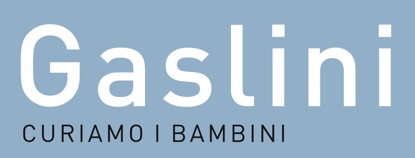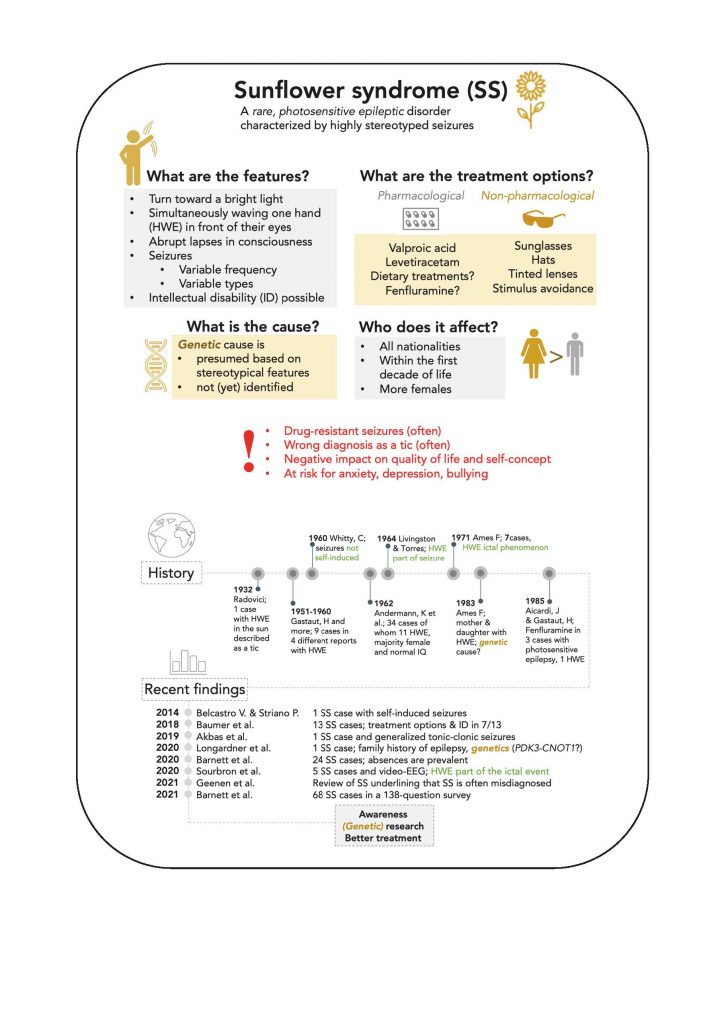Together with Prof. Thiele (Kennedy R. Geenen, James Richard Barnett, Boston, United States), Prof. Lagae (Dr. Jo Sourbron, Leuven, Belgium) and Prof. Striano (Dr. Antonella Riva, Genova, Italy) we are aiming to create awareness of Sunflower syndrome worldwide. That’s why we have launched our latest PATRE project.
To register, please click here.
We are happy about every Sunflower Syndrome patient who participates. For questions, please contact us (patients and doctors) at sunflower@patre.info.
We offer networking and support to patients and co-authorships to doctors.



Definition of the Sunflower Syndrome
Sunflower syndrome is a rare epileptic disorder characterized by distinctive seizures that manifest in a highly stereotyped physical behavior. Individuals with Sunflower syndrome seek out a light source, most often the sun, and wave one hand in front of their eyes. Eye fluttering may occur in association with these handwaving episodes (HWE). In addition to HWE, other seizure types including absence seizures and generalized tonic-clonic seizures are often seen in patients with Sunflower syndrome.
Sunflower syndrome is poorly understood and under-recognized at the clinical level and is not thoroughly described in the literature. The HWE are often thought to be related to a tic disorder or obsessive-compulsive disorder (OCD).
A lack of awareness and understanding, both in the medical community and the public, has resulted in many patients developing poor self-esteem and self-concept. Furthermore, Sunflower syndrome continues to be referred to as self-induced photosensitive epilepsy. While some reports have claimed that the HWE induce seizures, other studies have suggested that the HWE themselves are part of the seizure activity. Additionally, EEG findings have illustrated that epileptiform activity is coincident with the start of the HWE. Unfortunately, Sunflower syndrome often proves resistant to currently available anticonvulsant treatment. Although some individuals have reported success with valproic acid, that efficacy varies, and the use of other broad-spectrum anticonvulsant medications is rarely effective. Non-pharmacological interventions such as stimulus avoidance through the use of hats and sunglasses may be beneficial, but these strategies alone do not lead to seizure freedom.
Video EEG papers
Two recent studies have suggested that the HWE is part of the seizure activity:https://pubmed.ncbi.nlm.nih.gov/33722995 => Video 1-http://links.lww.com/WNL/B347 + Video 2-http://links.lww.com/WNL/B348 & https://pubmed.ncbi.nlm.nih.gov/33070054/
Follow-up studies in Europe and beyond
Together with the group of professor Lagae (Dr. Jo Sourbron, Leuven, Belgium), professor Striano (Dr. Antonella Riva, Genova, Italy) and professor Kluger (Lorenz Kiwull and Kirsten Eschermann, Salzburg, Austria); we are aiming to create awareness of Sunflower syndrome (SS) in Europe, the UK and beyond. We would first start with a short questionnaire (for (the parents of) the child with SS) to evaluate which medicines are effective for patients with SS. This would start in July 2021. Subsequently, we would make a larger questionnaire that includes different aspects of the syndrome, similar to the one of the Boston group (https://pubmed.ncbi.nlm.nih.gov/33639438/). If you are interested to participate contact us via email sunflower@patre.info.

